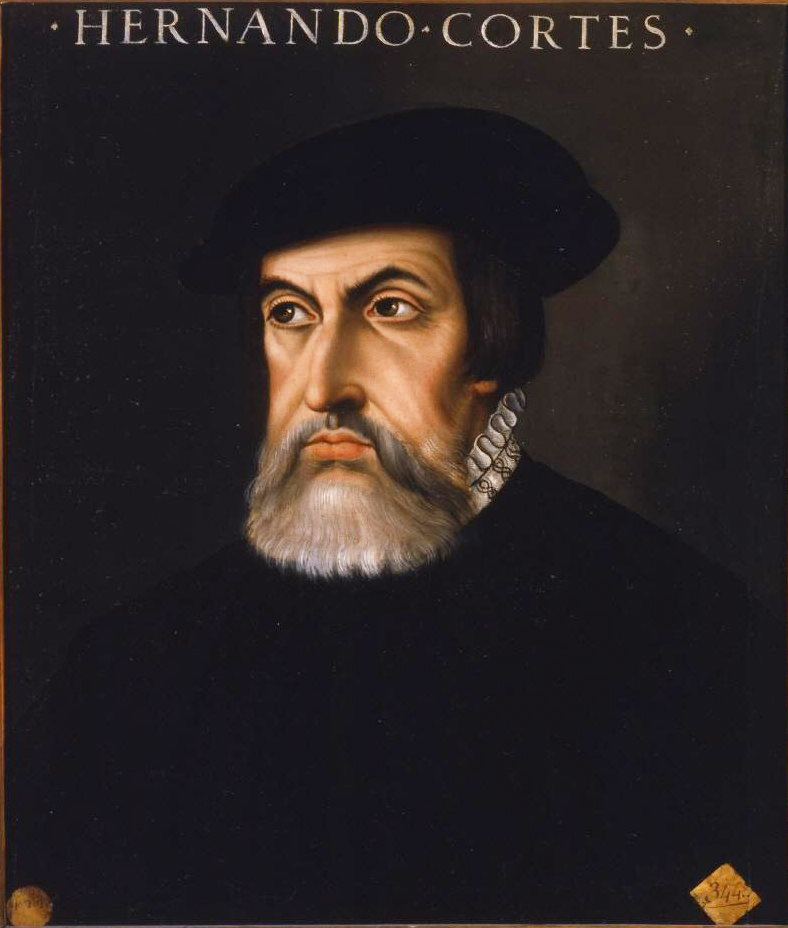While California has only been an American state since 1850, California has been known as a place of sunshine, gold, and riches since the early 16th century...in literature, at any rate.
 |
| Map of California, 1650, Johannes Vingboos. Public Domain. The compass rose is pointing to the approximate location of modern day San Diego. |
Renaissance-era Europeans were entranced, and believed the account must be true. In 1533, explorer Fortún Ximénez discovered the southern portion of what is now Baja California--a peninsula that was often mistaken for an island for quite some time. He died, but two years later, Hernán Cortés arrived at the bay, attempting to start a colony there. Even though the native population (which included men) weren't dripping with gold jewelry, the idea that this must be the fabled California stuck.
 |
| Conquistador Hernán Cortés by Paolo Giovio. Public Domain. |
 |
| Satellite view of Baja California. Public Domain. |
It wasn't until almost a hundred years later that a Jesuit missionary and cartographer, Father Eusebius Francisco Kino, set off to find new people and eventually came to the Colorado River, near what is now Yuma, Arizona. He proved California was fixed to the rest of the continent, but the matter was not entirely put to rest until the time of the American Revolutionary War, around 1775, when Juan Bautista de Anza explored the area between Sonora and California coast.
 |
| Juan Bautista de Anza, photographic reproduction of an oil painting by Fray Orsi, 1774. Public Domain. |
***

California native Susanne Dietze is a RITA-nominated author who's seen her books on the ECPA and Publisher's Weekly Bestseller lists for inspirational fiction. Her latest novel is The Blizzard Bride. Learn more about her on her website, www.susannedietze.com.

